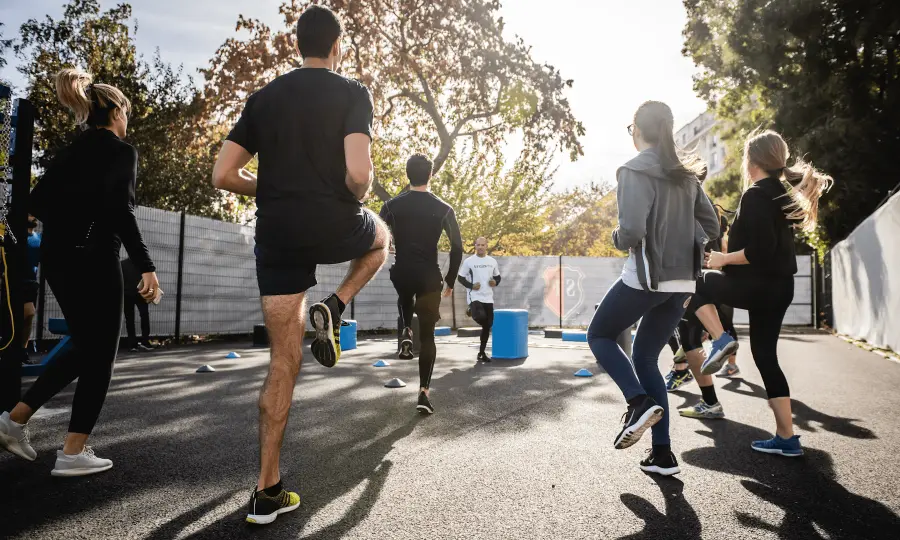In a world that often emphasizes high-intensity workouts and rigorous fitness regimes, walking can seem like an underrated form of exercise. However, walking is a powerful tool that can significantly enhance both physical and mental fitness. This simple, accessible activity offers numerous benefits, from improving cardiovascular health to boosting mood and mental clarity. In this blog, we will explore the many advantages of walking, how to incorporate it into your daily routine, and tips for maximizing its benefits.
The Physical Benefits of Walking
Walking is a low-impact exercise that can be performed by people of all ages and fitness levels. Despite its simplicity, it offers a multitude of physical health benefits:
Cardiovascular Health
Regular walking improves heart health by increasing heart rate, improving circulation, and strengthening the heart muscle. Studies have shown that walking can lower blood pressure, reduce bad cholesterol (LDL), and increase good cholesterol (HDL), thereby decreasing the risk of heart disease and stroke.
Weight Management
Walking is an effective way to burn calories and manage weight. A brisk 30-minute walk can burn approximately 150-200 calories, depending on your weight and pace. Incorporating walking into your daily routine helps maintain a healthy weight and prevent obesity-related conditions such as diabetes and hypertension.
Bone and Joint Health
Walking strengthens bones and muscles, reducing the risk of osteoporosis and arthritis. It increases bone density and helps maintain joint flexibility. Unlike high-impact exercises, walking is gentle on the joints, making it an ideal activity for individuals with joint pain or those recovering from injury.
Improved Digestion
Walking aids digestion by stimulating the digestive tract and promoting regular bowel movements. A post-meal walk can help prevent bloating and discomfort, making it a beneficial practice for individuals with digestive issues.
Enhanced Immune Function
Regular physical activity, including walking, boosts the immune system. It increases the circulation of immune cells, helping the body fend off infections and illnesses. Walking outdoors exposes you to sunlight, which is essential for vitamin D production, further supporting immune health.
The Mental Benefits of Walking
In addition to its physical advantages, walking has profound effects on mental health and well-being:
Reduced Stress and Anxiety
Walking, particularly in natural settings, helps reduce stress and anxiety. The rhythmic movement and fresh air have a calming effect on the mind. Studies have shown that walking can lower cortisol levels, the body’s primary stress hormone, promoting relaxation and mental clarity.
Improved Mood
Walking stimulates the release of endorphins, the body’s natural mood elevators. This can help alleviate symptoms of depression and improve overall mood. Walking with friends or loved ones also provides social interaction, which can further enhance emotional well-being.
Enhanced Cognitive Function
Regular walking boosts cognitive function and memory. It increases blood flow to the brain, promoting the growth of new brain cells and improving neural connections. Walking has been linked to better concentration, problem-solving skills, and a lower risk of cognitive decline and dementia.
Better Sleep
Walking can improve sleep quality by regulating the body’s natural sleep-wake cycle. Engaging in regular physical activity helps reduce insomnia and promotes deeper, more restorative sleep. Walking in the evening can help wind down after a long day, preparing the body and mind for restful sleep.
Increased Creativity
Walking, especially outdoors, stimulates creativity and enhances problem-solving abilities. The change of scenery and gentle physical activity can help break mental blocks and inspire new ideas. Many writers, artists, and thinkers, including notable figures like Steve Jobs, have used walking as a tool for creative thinking.
How to Incorporate Walking into Your Routine
Incorporating walking into your daily routine is easy and requires minimal equipment. Here are some tips to get started:
Set Realistic Goals
Start with small, achievable goals. Aim for a 20-30 minute walk most days of the week. Gradually increase the duration and intensity as your fitness level improves. Using a pedometer or fitness tracker can help monitor your progress and motivate you to reach your goals.
Choose the Right Footwear
Invest in a pair of comfortable, supportive walking shoes. Proper footwear reduces the risk of injury and makes walking more enjoyable. Look for shoes with good arch support, cushioning, and a flexible sole.
Find a Walking Buddy
Walking with a friend, family member, or pet can make the activity more enjoyable and help you stay accountable. It provides an opportunity for social interaction and makes the time pass more quickly.
Incorporate Walking into Daily Activities
Integrate walking into your daily routine by making small changes. Park further away from your destination, take the stairs instead of the elevator, and schedule walking meetings. Consider walking to nearby errands or during your lunch break.
Explore Different Routes
Keep your walks interesting by exploring different routes. Walking in parks, nature trails, or along the beach can provide a refreshing change of scenery. Varying your route can also introduce new challenges, such as inclines or uneven terrain, to enhance your workout.
Listen to Music or Podcasts
Listening to music, audiobooks, or podcasts can make walking more enjoyable and help pass the time. Create a playlist of your favorite upbeat songs to keep you motivated.
Practice Mindful Walking
Focus on the present moment while walking. Pay attention to your surroundings, the sensation of your feet on the ground, and your breathing. Mindful walking enhances the mental benefits of the activity and promotes relaxation.
Maximizing the Benefits of Walking
To get the most out of your walking routine, consider the following tips:
Maintain Good Posture
Walk with your head up, shoulders back, and arms swinging naturally. Good posture prevents strain and maximizes the efficiency of your movements.
Increase Intensity
Incorporate intervals of brisk walking or add hills to increase the intensity of your walk. This boosts cardiovascular fitness and burns more calories.
Stay Hydrated
Drink plenty of water before, during, and after your walk, especially in hot weather. Staying hydrated helps maintain energy levels and prevents dehydration.
Warm-Up and Cool Down
Begin your walk with a gentle warm-up to prepare your muscles and joints. Finish with a cool-down and stretching to enhance flexibility and reduce muscle soreness.
Conclusion
Walking is a powerful, accessible form of exercise that offers numerous physical and mental health benefits. By incorporating walking into your daily routine, you can improve cardiovascular health, manage weight, reduce stress, enhance mood, and boost cognitive function. Embrace the simplicity and effectiveness of walking, and let it pave the way to a healthier, happier life. Remember, every step counts on the path to physical and mental fitness.




